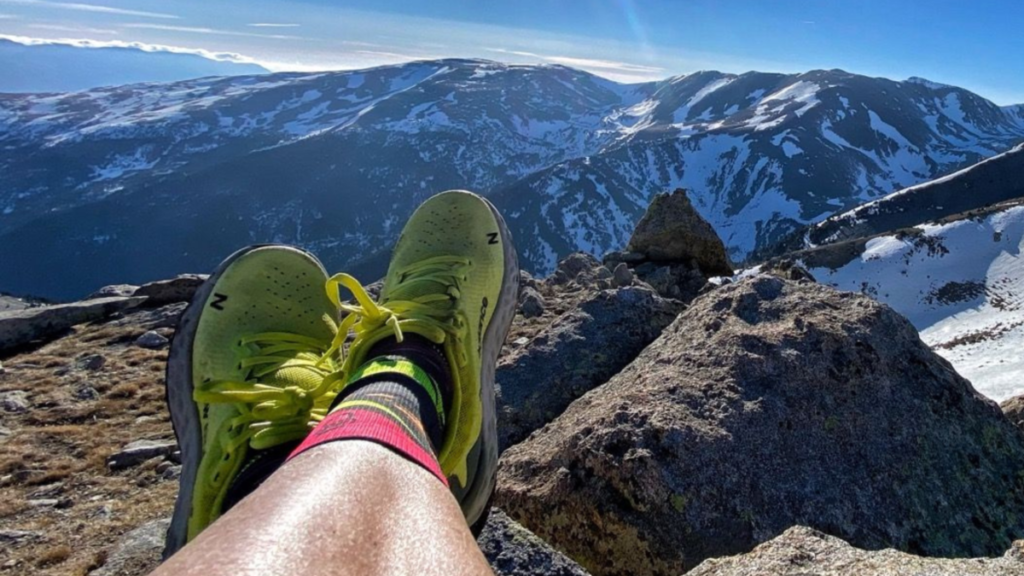
I learned something about how trail running shoes are different when I moved to the mountains of southern Spain. The area I had been living in was a forested area with high rainfall. As a result, the only shoes available in our local shop had relatively few but pronounced lugs to deal with the mud. My new trails in Spain were all hard and rocky mixed with a bit of dry sand. I quickly discovered that my mud shoes gave me very little traction on my new trails.
When choosing the trail running shoe you need, first assess the terrain you’ll be running on. You could have rocky trails, muddy paths, or technical terrain, so choosing a shoe with the appropriate traction, stability, and protection will enhance your running experience and safety.
Let’s take a closer look at the factors we need to look out for to get the most from our trail running shoes.
What Type Of Trail Running Shoe Do I Need
Selecting the right trail running shoe is crucial for optimizing your performance and preventing injuries on the trails. Factors such as terrain, foot type, and personal preferences play a significant role in determining the most suitable shoe for your needs.
When considering the type of trail running shoe you need, it’s essential to assess the terrain you’ll be running on. Whether you encounter rocky trails, muddy paths, or technical terrain, choosing a shoe with the appropriate traction, stability, and protection can enhance your running experience and safety.
Additionally, understanding your foot type and gait pattern is key to finding a shoe that offers the right support and comfort. Factors like arch height, pronation, and supination can influence the type of cushioning and stability features you require in a trail shoe.
Lastly, personal preferences such as cushioning level, shoe weight, and drop height should also be taken into account when selecting your trail running shoe. By considering these factors, you can ensure that you find a shoe that not only fits well but also enhances your performance and enjoyment on the trails.
Understanding Terrain Types: From Rocky Trails to Muddy Paths
Diving into the world of trail running unveils a diverse range of terrains, each presenting unique challenges and requirements for your running shoes. From rocky trails to muddy paths, understanding the terrain types is crucial in selecting the right trail running shoe.
Rocky trails demand shoes with robust outsoles and protective features to shield your feet from sharp rocks and uneven surfaces. Look for shoes with durable materials and rock plates to enhance stability and prevent injuries on rugged terrain.
On the other hand, navigating muddy paths requires shoes with aggressive lugs and superior traction to grip slippery surfaces effectively. Waterproofing or water-resistant properties can also be beneficial in keeping your feet dry and comfortable in wet conditions.
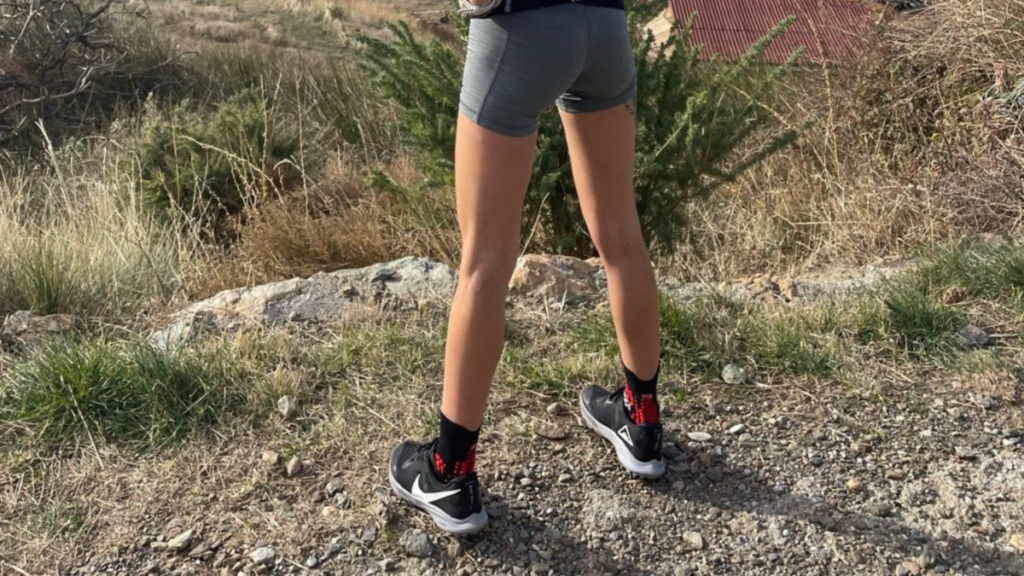
By tailoring your shoe choice to the specific terrain you’ll be running on, you can optimize your performance and minimize the risk of discomfort or injuries. Understanding how different terrains impact shoe selection ensures that you’re well-equipped to conquer any trail with confidence and ease.
Anatomy of a Trail Running Shoe: Key Components Explained
The anatomy of a trail running shoe consists of key components that play a crucial role in enhancing your performance and comfort on the trails.
Starting with the outsole is the bottom part of the shoe that comes into direct contact with the ground. It is typically made of durable rubber with aggressive lugs that provide traction on various terrains, ensuring a secure grip with each step. The outsole’s design is essential for preventing slips and falls, especially on rocky or muddy trails.
Moving on to the midsole, this layer between the outsole and the upper part of the shoe is responsible for cushioning and support. It absorbs impact forces during each stride, reducing the strain on your joints and muscles. The midsole material and thickness can vary, offering different levels of cushioning and responsiveness based on your preferences and running style.
Lastly, the upper part of the shoe covers the top of your foot and provides stability and protection. It is usually made of breathable and lightweight materials that offer a secure fit while allowing airflow to keep your feet cool and dry. Additionally, features like overlays and toe caps enhance durability and shield your feet from debris on the trails.
Foot Type and Gait Analysis: Finding the Right Fit
Understanding your foot type and conducting a gait analysis are crucial steps in finding the perfect trail running shoe. By determining whether you have a neutral foot, overpronation, or supination, you can tailor your shoe choice to provide the right support and stability.
For those with overpronation, where the foot rolls inward excessively, a shoe with motion control and stability features is essential to prevent injuries. On the other hand, supination, where the foot rolls outward, requires cushioning and flexibility to absorb impact and promote a more natural stride.
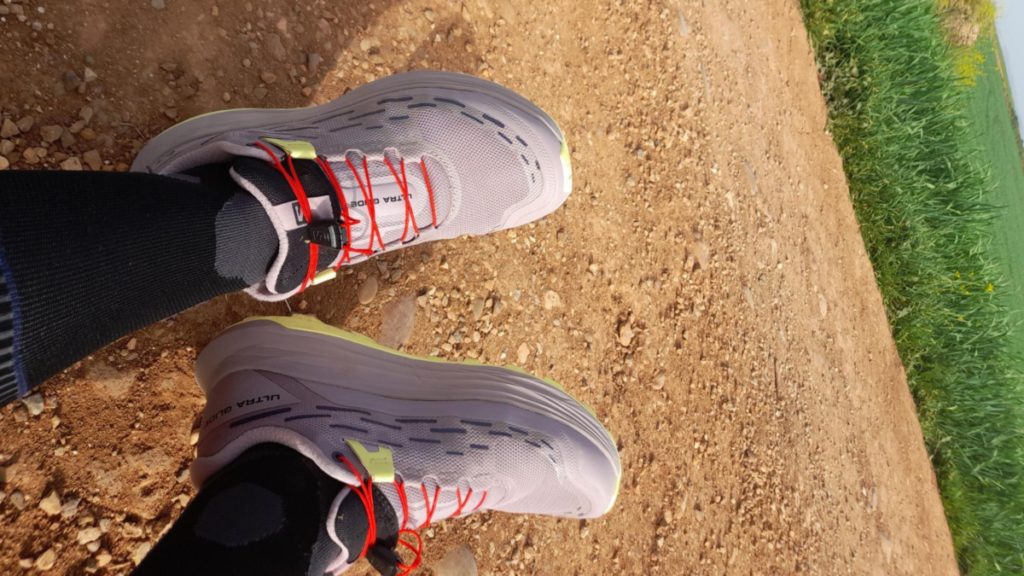
A neutral foot, with a balanced pronation, benefits from a shoe that offers a good balance of cushioning and support without excessive features.
Conducting a gait analysis helps identify how your foot moves during each stride, allowing you to choose a shoe that complements your natural movement patterns. By understanding your foot type and gait, you can ensure a comfortable and injury-free trail running experience.
Cushioning vs. Responsiveness: Balancing Comfort and Performance
When choosing trail running shoes, it’s crucial to strike a balance between cushioning and responsiveness. The level of cushioning in a shoe directly affects the comfort and impact absorption during your runs, while responsiveness determines the energy return and agility you experience on the trails.
Opting for highly cushioned shoes provides excellent shock absorption, ideal for longer runs on rocky or uneven terrain. However, excessive cushioning may compromise responsiveness, making it harder to feel the ground beneath your feet and potentially slowing down your pace. On the other hand, shoes with lower cushioning levels offer greater responsiveness, allowing for a more dynamic and efficient running experience.
Finding the right balance between cushioning and responsiveness depends on your personal preferences and running style. Consider the type of trails you frequent and the distances you cover to determine the optimal level of cushioning for your needs. By understanding how cushioning and responsiveness impact your comfort and performance, you can make an informed decision when selecting your trail running shoes.
Stability and Support: Preventing Injury on the Trails
Stability and support are crucial factors to consider when selecting trail running shoes, particularly when tackling uneven terrain. These features play a significant role in preventing injuries such as ankle rolls and twists that can occur on challenging trails. Opting for shoes with adequate stability features, such as a supportive midsole and secure heel counter, can help maintain your balance and reduce the risk of accidents.
When choosing trail running shoes for stability and support, look for models with reinforced outsoles for better traction on rocky or slippery surfaces. Additionally, consider shoes with a wider base and firm arch support to enhance stability on uneven terrain. It’s also beneficial to select shoes with a secure lacing system that allows for a customized fit to minimize movement within the shoe.
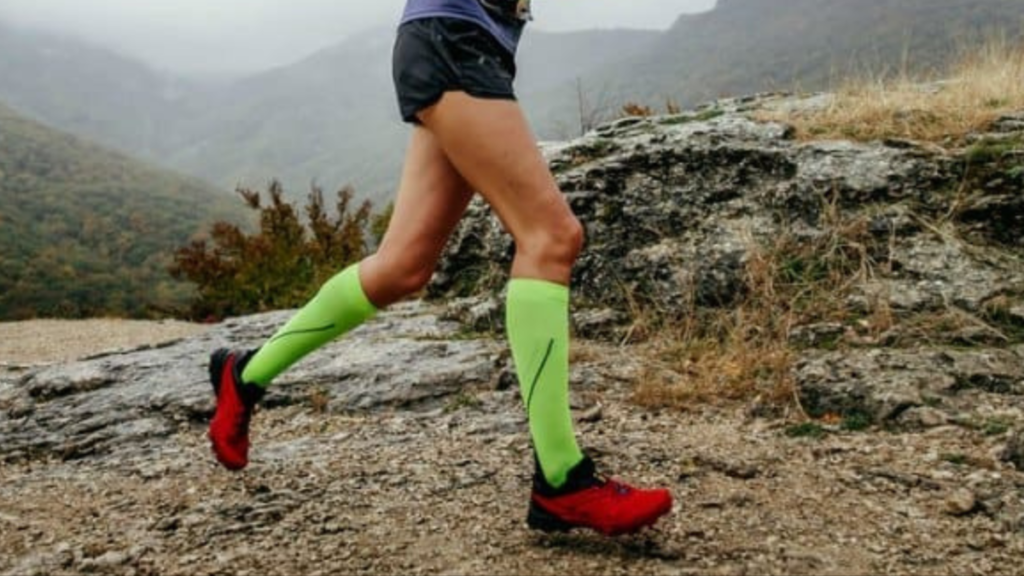
By prioritizing stability and support in your trail running shoe selection, you can enjoy a safer and more comfortable running experience, allowing you to focus on your performance and the beauty of the trails. Remember, investing in shoes that prioritize stability can significantly reduce the likelihood of injuries and enhance your overall trail running experience.
Waterproof vs. Breathable: Weather Considerations for Trail Running
When choosing trail running shoes, the decision between waterproof and breathable materials is crucial. “Weather conditions” play a significant role in determining which type of shoe is most suitable for your needs. Waterproof shoes are ideal for wet and muddy trails, providing protection from moisture and keeping your feet dry. On the other hand, breathable shoes are more suitable for hot and dry conditions, allowing for better airflow and moisture-wicking to keep your feet cool and comfortable.
Consider the “terrain” you will be running on as well. Waterproof shoes are great for tackling streams, puddles, and rainy conditions, while breathable shoes are better suited for dry and dusty trails where ventilation is key. Ultimately, your “personal preference” also plays a role in this decision. Some runners prioritize dry feet over breathability, while others prefer the comfort of well-ventilated shoes.
By weighing the benefits of waterproof and breathable materials based on weather conditions, terrain, and personal preference, you can make an informed choice that enhances your trail running experience.
Minimalist vs. Maximalist: Finding Your Running Philosophy
When it comes to trail running shoes, the debate between minimalist and maximalist designs is a significant one. “Minimalist” shoes are known for their lightweight, low-to-the-ground construction, promoting a more natural running experience and enhanced proprioception. On the other hand, “maximalist” shoes offer extra cushioning and support, ideal for longer distances and rough terrains.
For runners seeking a more connected feel with the trail and aiming to strengthen foot muscles, minimalist shoes can be a great choice. They encourage a forefoot or midfoot strike, potentially reducing the risk of certain injuries. However, they may not provide enough cushioning for runners with high-impact strides or those needing extra support.
Conversely, maximalist shoes excel in shock absorption and comfort, making them suitable for runners looking for protection on challenging terrains or longer runs. The added cushioning can reduce fatigue and impact on joints but may feel bulky to some runners.
By understanding the benefits and drawbacks of minimalist and maximalist trail running shoes, runners can align their choices with their running goals and preferences for a more enjoyable and fulfilling trail running experience.
Trail Specific vs. All-Terrain: Specialized vs. Versatile Options
Trail-specific shoes are tailored for the demands of rugged terrain, featuring aggressive outsoles with deep lugs for enhanced traction on uneven surfaces. These shoes prioritize stability and protection, making them ideal for technical trails with rocks, roots, and steep inclines. On the other hand, all-terrain shoes are more versatile, designed to handle a range of surfaces from trails to roads with ease. They offer a balance between grip and comfort, making them suitable for runners who transition between different terrains frequently.
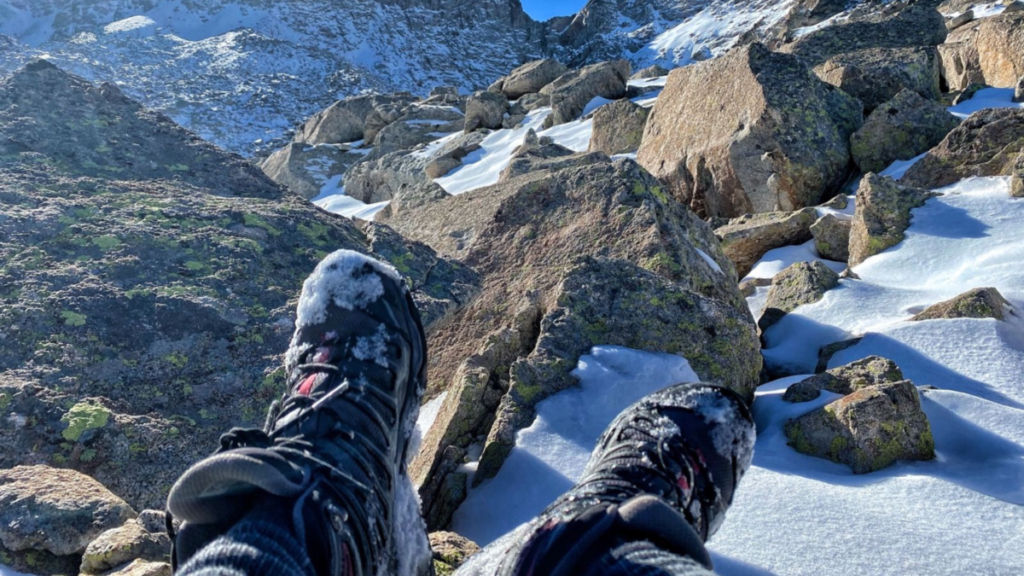
When choosing between trail-specific and all-terrain shoes, consider the primary type of terrain you will be running on. If your routes consist mainly of challenging trails with unpredictable conditions, opt for trail-specific shoes to ensure optimal performance and safety. Conversely, if you enjoy exploring various terrains and need a shoe that can adapt to different surfaces, all-terrain options provide the versatility you need.
By understanding the differences between these specialized and versatile options, runners can make an informed decision based on their specific running environment and preferences, ultimately enhancing their trail running experience.
Durability and Longevity: Investing in Quality Trail Shoes
Durability is a crucial factor to consider when investing in quality trail running shoes. The rugged terrain and constant abrasion can take a toll on your footwear, making durability a key aspect to prioritize. When selecting trail shoes, factors such as the quality of materials, construction techniques, and maintenance practices play a significant role in ensuring longevity.
Trail shoes designed with durable materials like reinforced uppers, protective toe caps, and sturdy outsoles are better equipped to withstand the challenges of rough trails. Additionally, paying attention to the construction quality, such as double stitching and secure bonding of components, can enhance the overall durability of the shoes.
Maintenance practices, such as cleaning your shoes after each run, allowing them to air dry properly, and storing them in a cool, dry place, can also contribute to prolonging their lifespan. By choosing trail running shoes that prioritize durability and implementing proper care routines, runners can ensure that their footwear remains reliable and supportive throughout many miles on the trails.
Brand and Model Selection: Navigating the Market
When navigating the market for trail running shoes, it’s essential to consider popular brands and models that cater to different preferences and needs. Each brand and model comes with its unique features, strengths, and weaknesses that can significantly impact your trail running experience.
Brands like “Salomon” and “Brooks” are well-known for their quality and innovation in trail running footwear. “Salomon” offers shoes known for their excellent grip and stability, ideal for technical terrains, while “Brooks” focuses on providing cushioning and support for long-distance comfort. Researching these brands and trying out different models can help you determine which one aligns best with your running style and preferences.
Additionally, exploring options from brands like “Hoka One One” and “Altra” can introduce you to maximalist and minimalist designs, respectively, allowing you to find the right balance between cushioning and ground feel. By trying out various brands and models, you can narrow down your choices and find the perfect trail running shoe that suits your needs and enhances your performance on the trails.
Budget Considerations: Finding Value Without Sacrificing Quality
When looking for trail running shoes on a budget, it’s important to find a balance between affordability and quality. One strategy is to consider last season’s models or look for sales and discounts, which can offer significant savings without compromising on performance. Another option is to explore lesser-known brands that provide good quality at a lower price point.
“Value” and “quality” can still be achieved by focusing on essential features such as durable outsoles, adequate cushioning, and a secure fit. Prioritizing these key elements can ensure that you get the most out of your trail running shoes without breaking the bank. Additionally, considering versatile options that can handle a variety of terrains can save you money in the long run by eliminating the need for multiple pairs of shoes.
By being strategic in your search and prioritizing what matters most in terms of performance and durability, you can find affordable trail running shoes that meet your needs without sacrificing quality. Remember, investing in a good pair of shoes is an investment in your comfort and safety on the trails.
